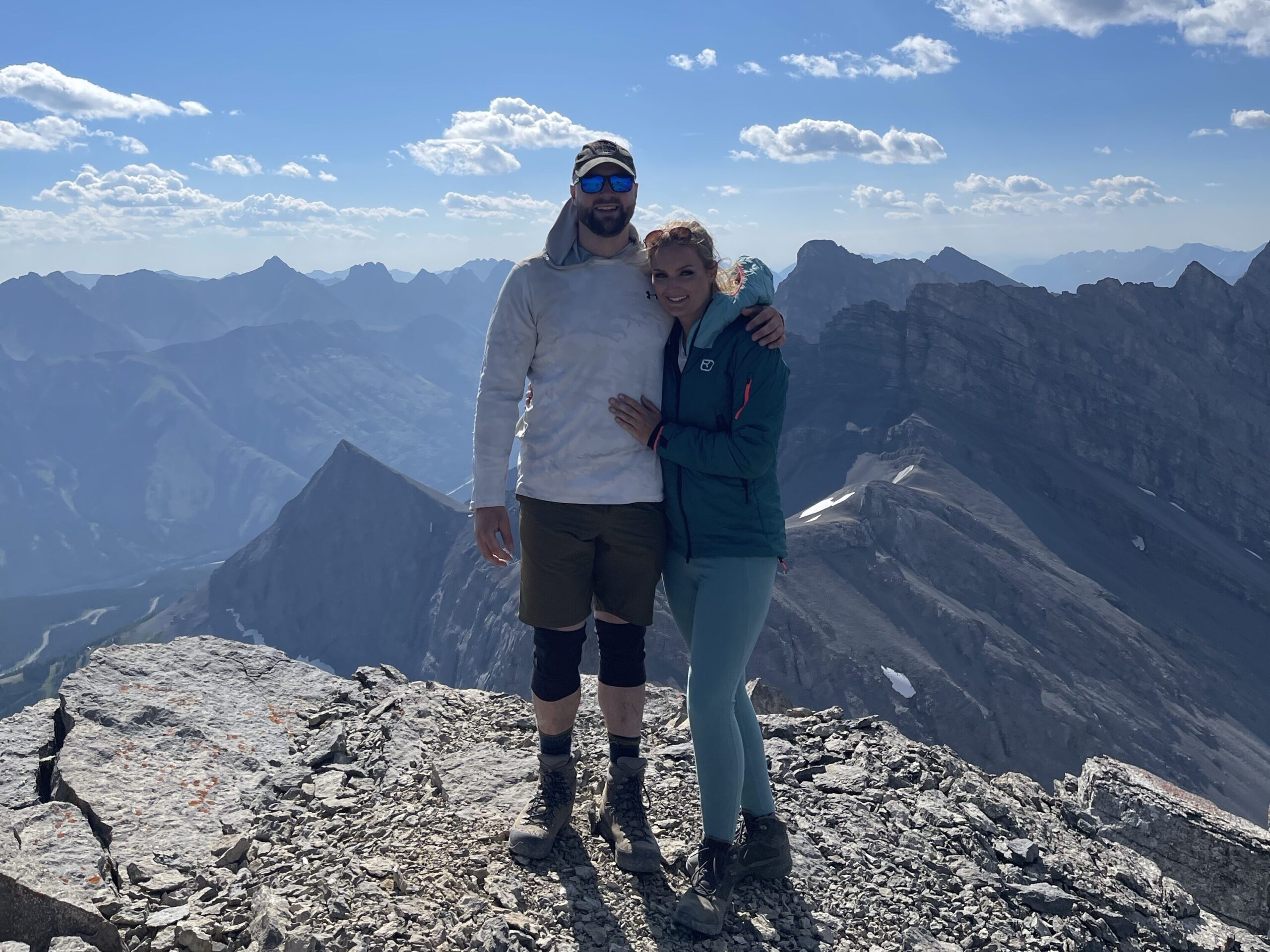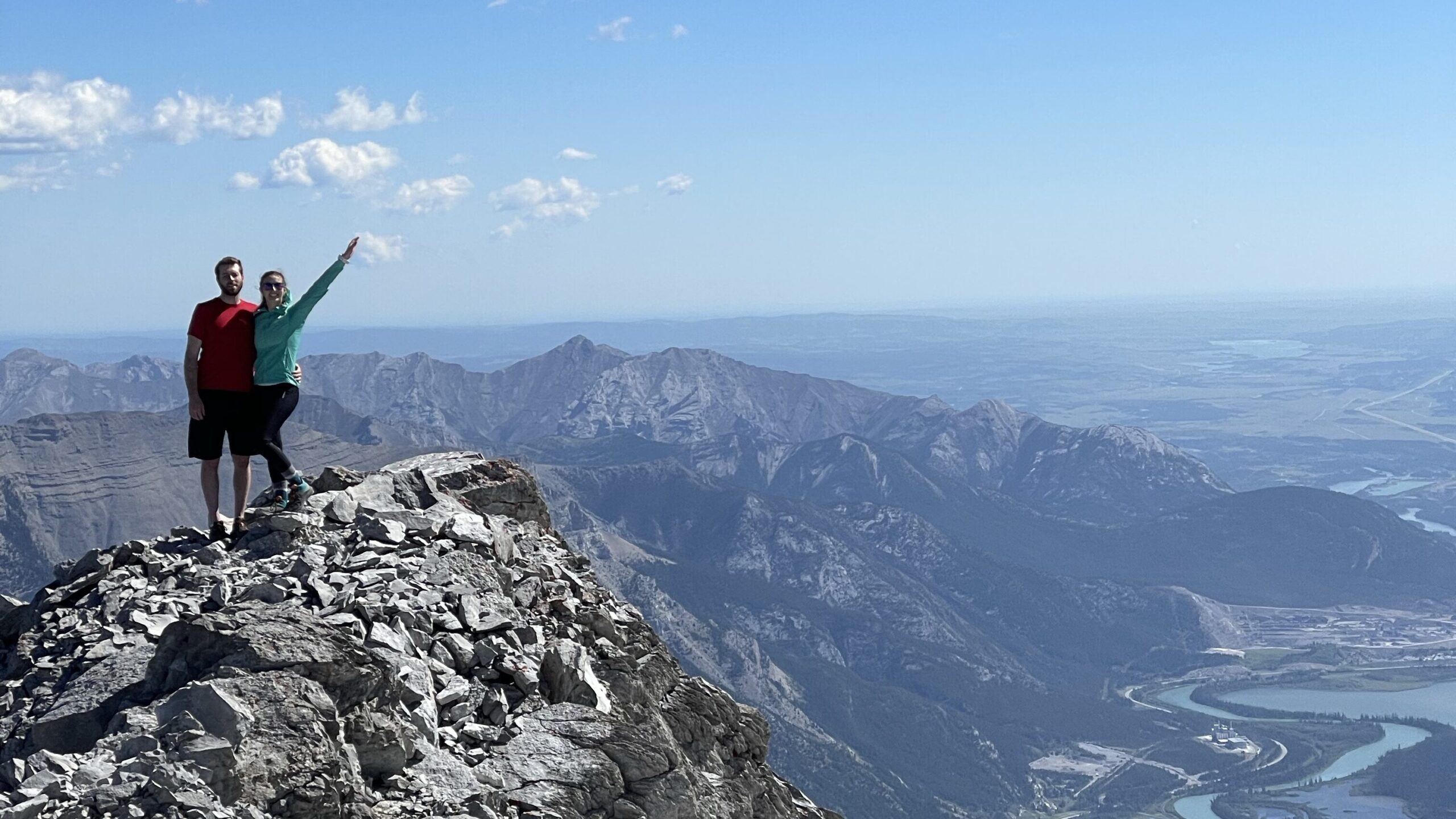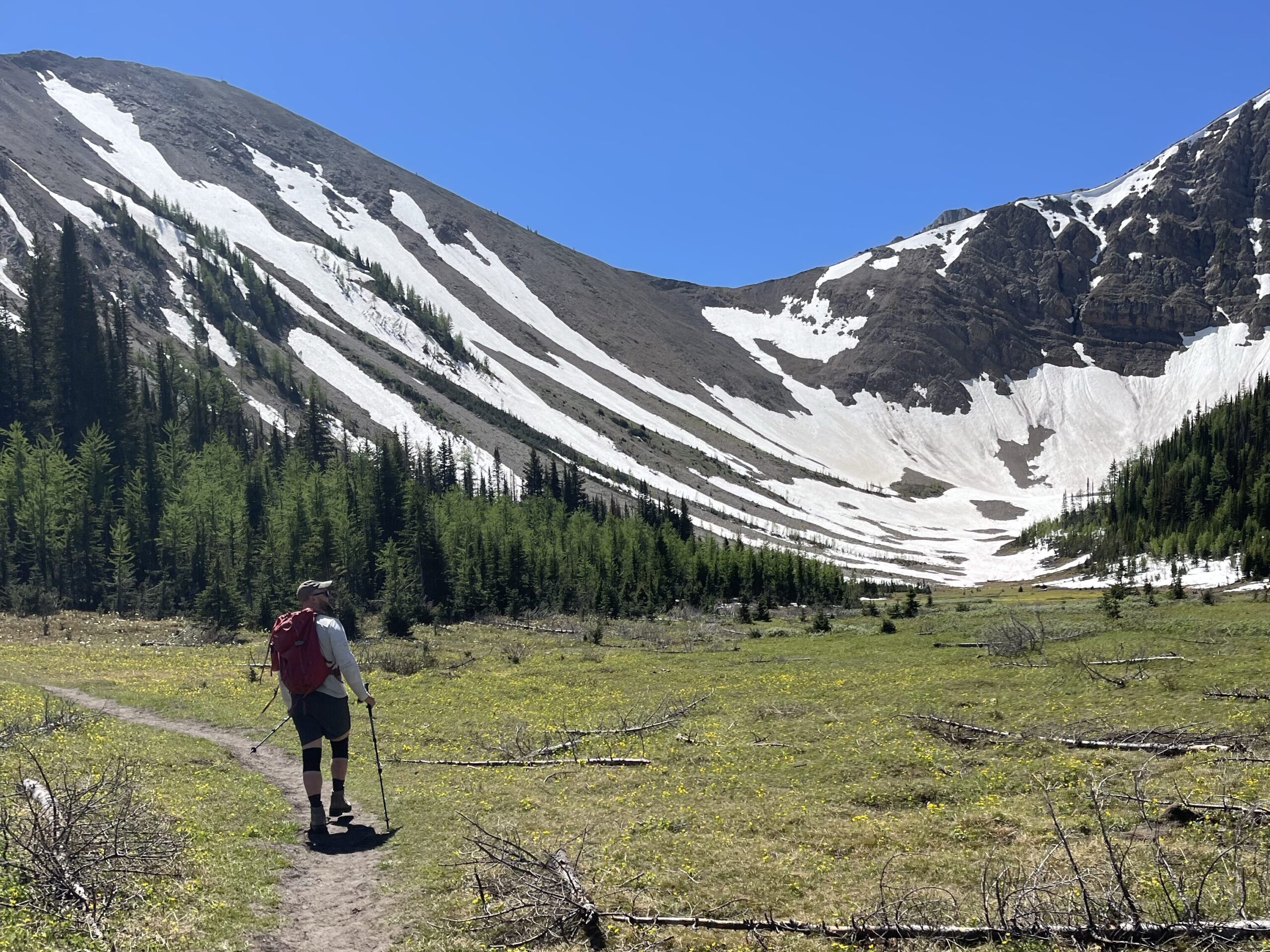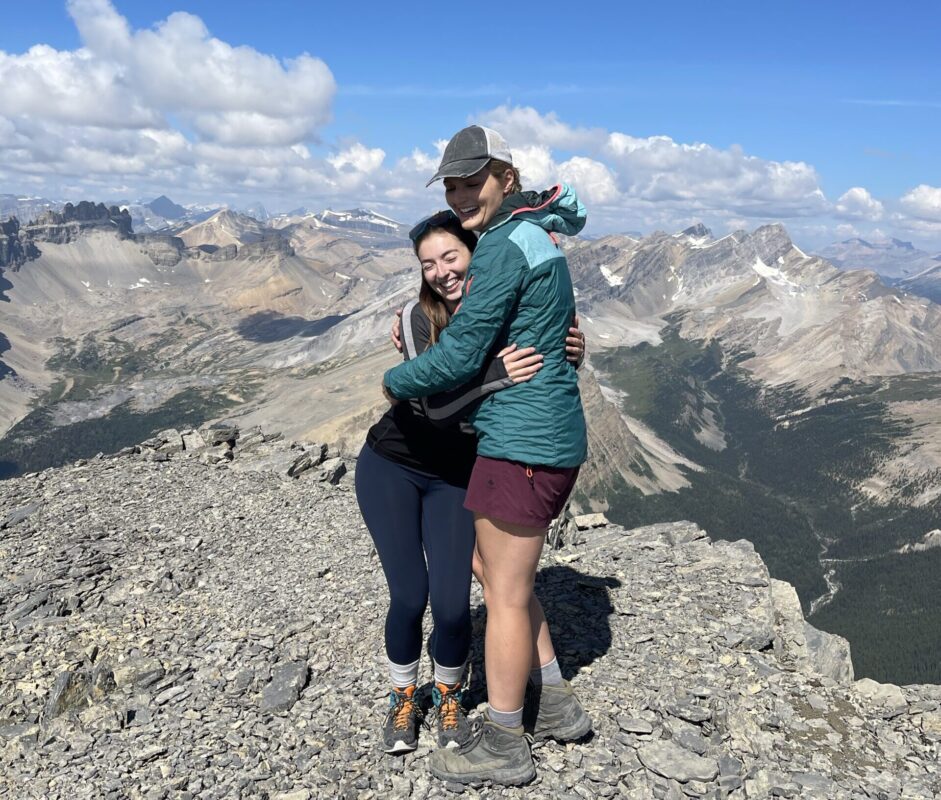When you’re out and about doing regular activities, it can be easy to know when to wear pants and when to wear shorts. When you’re hiking, however, it can be difficult to predict what kinds of conditions you should expect and prepare for.
Most of the time I stick to hiking in pants because I find them protective and adaptable, but there are a few occasions in which I find hiking in shorts appropriate.
Whether you’re thinking about hiking in pants or shorts, it’s important to know the key differences and when each suits the conditions better for the best experience possible.

5 Differences Between Hiking in Shorts vs Hiking in Pants
If you’re wondering which option to choose for your upcoming hike, there are a few key differences between hiking in shorts and hiking in pants.
1. Pants Keep You Warmer
If you’re looking to hike on a very hot summer’s day, shorts will be a cooler option than pants, mostly because they will let a breeze in, at least to your lower leg, and higher if your shorts are a bit loose.
The groin is one of the warmest areas on the body, so allowing air circulation to this area will help cool you down on a hot day.
Pants, on the other hand, rarely have ventilation zips, and will retain heat a bit more than shorts will. This might be ideal on a windy day, where a breeze might cool you off too quickly.
2. Pants Protect From “Chub Rub”
If your thighs touch at all, you might be familiar with “chub rub” – a phenomenon where your sweaty thighs rub against one another and cause irritation and chafing.
Shorts tend to ride up or move out of place, allowing that delicate inner thigh skin to touch and risk the chub rub. Pants, meanwhile, tend to protect this area even if they fall down a bit.
If you’re prone to inner thigh irritation, you might opt to forego the shorts.
3. Pants Protect Skin on Lower Legs
Depending on where you’re hiking, the trail might be a bit overgrown or rugged. It only takes one wayward branch to give a nasty scratch to your skin.
Pants protect your lower legs from tall brush, sharp rocks, and snagging branches. Or, if you’re anything like me, you might just be a bit clumsy and need protection from tripping over your own two feet.
Shorts don’t provide any protection to the skin on your lower legs, but on the other hand, if you’re worried about snagging fabric or ruining an expensive pair of pants, shorts might be the better option since skin can heal and your delicate fabrics might not be repairable.
4. Pants Protect From UV Rays
Wearing pants while hiking will protect your legs from UV rays, whereas shorts won’t do the same.
Because pants cover the skin of your legs, the sun’s harmful rays won’t reach them, meaning you won’t end your hike with burnt knees or any funny tan lines.
Shorts don’t offer any protection for the skin of your lower legs, which might not be a deal breaker, but don’t forget to lather the sunscreen on your legs! Or maybe ankle-to-thigh tan lines are your thing; no judgment here.
5. Pants Cuffs Get Wet
If you’ve ever hiked through wet ground or muddy ground, you might have found that the bottoms of your pants absorbed some of the moisture and you had to trudge around with the cuffs of your pants wet and yucky.
While this isn’t a guarantee while you’re hiking since the ground might be totally dry, if there’s a chance of your pants getting wet, you’ll likely have to deal with that feeling for a while.
Shorts, on the other hand, are far enough off the ground that they won’t absorb any ground moisture or debris.

3 Similarities Between Hiking in Shorts vs Hiking in Pants
Although hiking in shorts and pants can be quite different, there are a few things they have in common.
1. Both Protect Upper Legs
Both shorts and pants protect the upper part of your legs from harmful UV rays and abrasions from rough surfaces.
Shorts and pants both cover the thighs with fabric (granted, shorts can vary in that aspect as well). When the skin is physically covered, it provides a barrier from UV rays reaching the skin and causing burns and tan lines.
Material covering the thighs also means that they’re less susceptible to nicks and scrapes from any rough surfaces or wayward tree branches you encounter on your hike.
2. Both Come in a Variety of Styles and Colors
No matter what your personal style preferences are, both shorts and pants come in a variety of sizes, styles, and colors for you to find exactly what suits you.
Sometimes hiking is all about the pretty views, and it’s nice to feel comfortable and confident in what you’re wearing.
3. Both Usually Have Pockets
It’s not a hard and fast rule (I’m looking at you, women’s pants), but most of the time, both pants and shorts will have pockets for you to carry your belongings on a hike.
Sometimes hikes are short enough that you forego the backpack, but you still end up carrying your phone, car keys, or other small belongings. (Small snacks in the pockets can be a moral booster when you need some energy).
It’s nice to have a few pockets to put some small things on during a hike, regardless of what’s available on your pack, and both shorts and pants tend to deliver in that aspect.

When You Should Choose Shorts Over Pants
Is hiking in shorts a bad idea? Find out more here!
However, if you’re going to choose to hike in shorts, here are the following scenarios when they might be an appropriate choice:
- On a really hot day – If the forecasted weather calls for very hot conditions and it’s difficult to imagine walking any distance without sweating, shorts might be the safe bet to wear while hiking.
- When the ground is muddy, wet, or you plan on crossing streams – This might make it difficult for you to keep your pants dry, so shorts might be the superior choice if the weather is warm enough.
- Short hikes – If the hike you’re planning to go on is a short distance, you should be safe to wear shorts. Even if the weather turns out to be cooler than planned, you should be able to tolerate wearing shorts for a small amount of time. The exact distance would vary per person, but I would recommend any hike that will take less than an hour and a half would be fine to wear shorts for.
- Easy terrain hikes – If the terrain is quite mild and the trail is groomed (wide and obvious), you should safely be able to wear shorts as it wouldn’t be much different than running errands in the city. If the weather feels warm enough for shorts and the hike feels like an easy walk in the woods, you should be able to wear shorts during easy terrain hikes.
- If you find pants uncomfortable – If you simply don’t enjoy spending time in pants or walking in pants, you can definitely hike in shorts. If shorts are the only way you will enjoy your hike, it’s definitely the preferable option.

When You Should Choose Pants Over Shorts
Although shorts can be lovely to wear, they’re not always appropriate given the conditions. Here are 5 times when I would recommend choosing pants instead of shorts:
- Possibility of cool moments throughout the day – If you’re on a long hike, or a hike that changes locations or altitudes, you might be in for some unpredictable weather. Even shaded areas can be quite cool compared to temperatures in the sun. If there’s any chance of the weather growing cool, you might be better off hiking in pants to retain body heat.
- Tough terrain – If the terrain is rugged or overgrown, or if you plan on scrambling (needing your hands for steep hiking), you might be better off wearing pants for added protection. Pants can protect your skin from scrapes and abrasions better than shorts can.
- Sunburn easily – If you’re prone to getting sunburns, pants might give you the added protection you need from the harmful UV rays without having to remember to apply sunscreen to your legs. IF you’re hiking on a day when the UV index is high, pants actually might be the better option.
- Windy day – Wind can cool you down quicker than you might imagine. If the temperature is hot but the winds are high, pants might be the better option to protect you from losing body heat and from wind burn.
- If you get chub rub – If you’ve ever had the uncomfortable experience of your thighs or calves rubbing together and causing chafing, rashes, or other irritation, you might prefer hiking in pants for some extra protection.
Questions?
Have you ever hiked in shorts? Was it a good experience or a bad one? Drop a comment below and I’ll get back to you!

